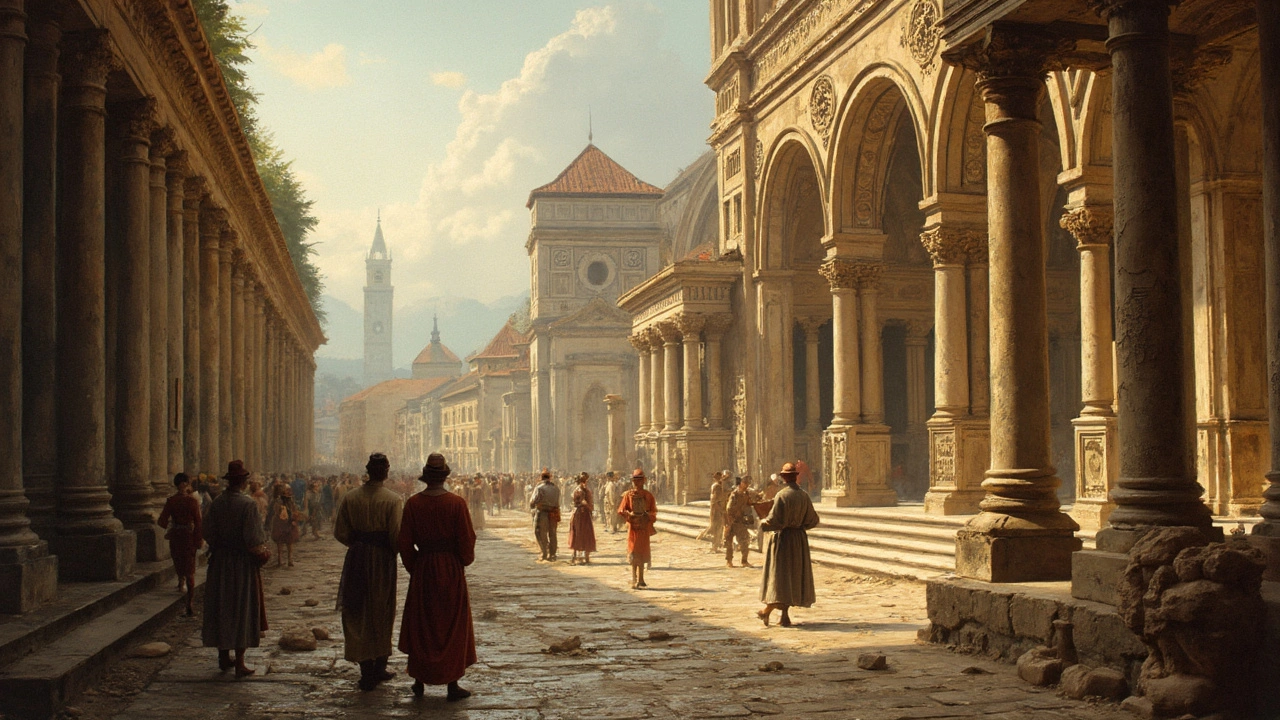This article breaks down how the Renaissance flipped the script on what it meant to be an artist. It digs into why painters and sculptors went from anonymous workers to household names during this period. You'll get a look at the big shifts in thinking that let creative people stand out and take credit for their work. Find out how these changes still shape our view of art and artists today. You'll also pick up tips on spotting real Renaissance influence in modern art.
Humanism in Architecture: Designing for People
Humanism in architecture means putting people first. It's about buildings that fit human bodies, senses, and daily life — not just grand statements or abstract forms. From Renaissance churches that honor human scale to modern homes that prioritize light and comfort, humanist design aims to make spaces useful, humane, and easy to live with.
Where did this come from? The idea goes back to Renaissance humanism, which re-centered design on human proportion and experience. Architects studied Greek and Roman buildings for balance and clarity. That interest in proportion shows up again in Greek Revival and Beaux-Arts buildings, where order and readable design help people understand and use a place. Even ancient Roman engineering focused on people — public baths, markets, and roads were made for everyday life.
How to spot humanist architecture
Look for scale you can relate to: doorways, windows, and stairs sized for comfort rather than spectacle. Notice how light enters a room and how rooms connect — humanist spaces favor natural light and clear circulation. Check materials and details: warm wood, tactile stone, and hand-crafted details invite touch and slow movement. Public humanist designs include welcoming facades, clear entrances, and plazas that encourage gathering — think Beaux-Arts boulevards or civic buildings that make you want to stay.
Humanist design isn’t just classical styles. Movements like Bauhaus and mid-century modern translated human-centered thinking into simplicity and practical furniture. High-tech and neo-futurist projects borrow humanist ideas when they focus on user comfort, accessibility, and flexible spaces rather than pure form. The key is whether the design answers real human needs: comfort, safety, social life, and adaptability.
Simple ways to bring humanism into your home or neighborhood
If you want a more human-centered place, start small. Make sure rooms get daylight and fresh air, and avoid layouts that require people to pass through private spaces to reach public ones. Choose furniture and fixtures sized for real use, not just looks. Add a front porch, clear entry, or a small public bench — those moves make a house or street feel usable and alive. In renovations, keep original proportions where possible: tall windows, proper ceiling height, and window placement all affect comfort.
For neighborhoods and cities, prioritize walkability, seating, shade, and mixed uses. Humanist public spaces invite interaction — markets, small parks, and wide sidewalks do more for daily life than isolated towers. Preservation matters too: saving buildings with human-scale proportions keeps streets readable and welcoming.
Humanism in architecture is a practical choice: it makes buildings easier to use, healthier to live in, and richer in everyday meaning. Want to spot humanist features the next time you walk your city? Start with the door, the light, and the place where people gather — those tell the story first.
Renaissance architecture isn’t just about beautiful old buildings—it's about a time when art and engineering came together like never before. This article breaks down how Renaissance thinkers influenced design, why symmetry suddenly mattered, and what makes these structures so ahead of their time. You’ll find out how architects in Florence shook up old ideas and set the template for modern buildings. There's a reason cities like Rome and Venice are tourist magnets—their hidden design tricks can actually help you spot real Renaissance work. Get ready for stories, tips, and down-to-earth explanations to help you see these landmarks through new eyes.


